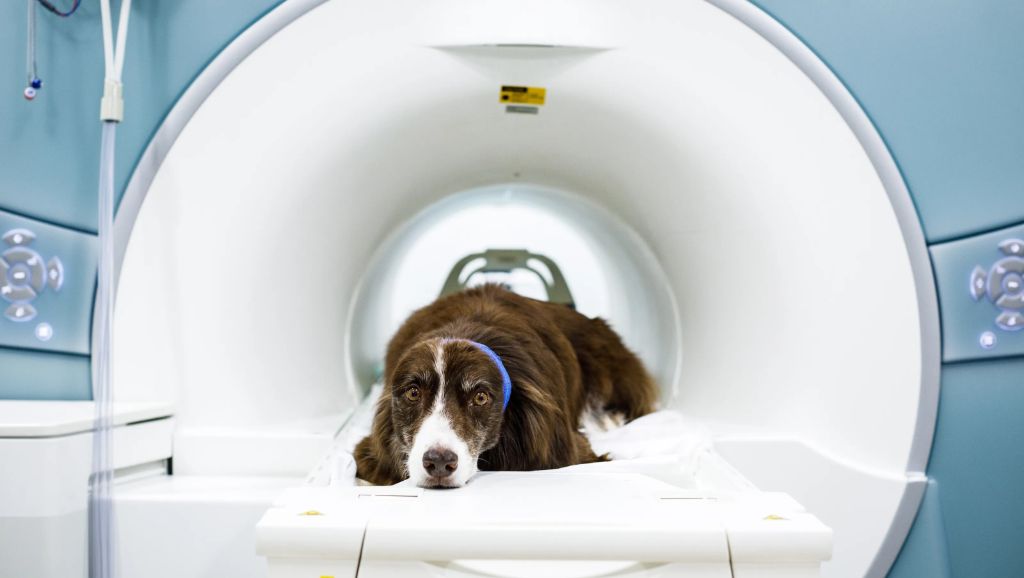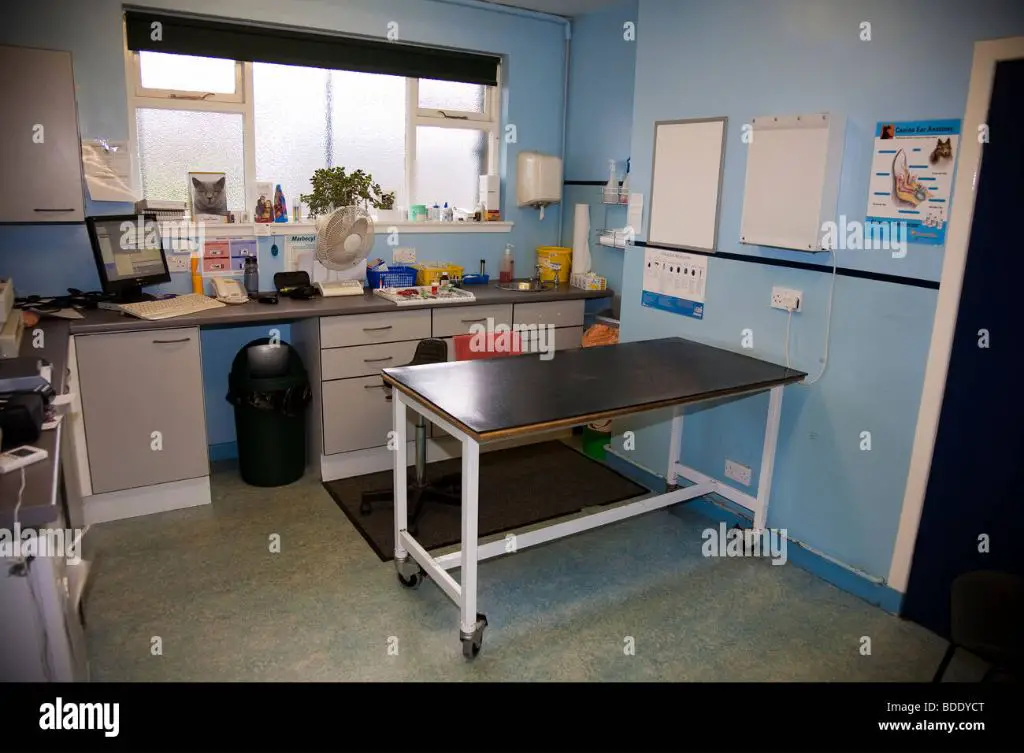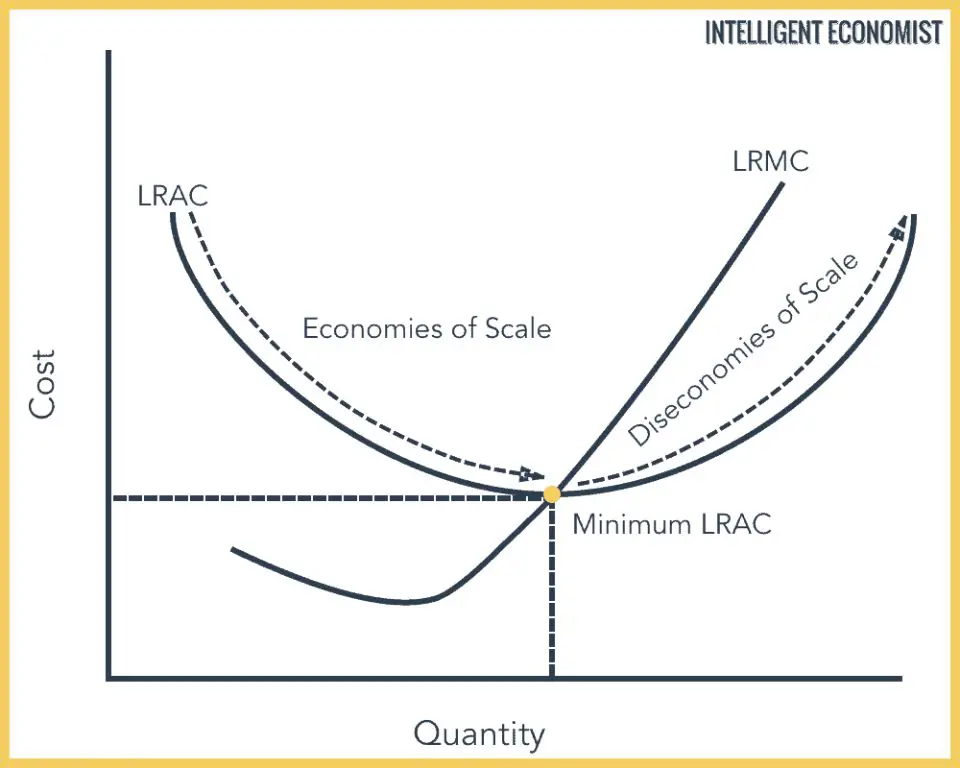Introduction
An MRI (magnetic resonance imaging) scan is an advanced imaging technology that allows veterinarians to get detailed views of a dog’s internal structures without surgery. Unfortunately, MRIs are very expensive for pet owners, with costs often ranging from $2,000 to $5,000 or more per scan. This high price tag leaves many wondering why an MRI is so costly for their canine companion.
What is an MRI?
An MRI (Magnetic Resonance Imaging) is a medical imaging technique that uses strong magnetic fields and radio waves to produce detailed images of the inside of the body. MRI is able to visualize soft tissues very well and provides excellent contrast between different types of tissue.
During an MRI, the patient lies inside a large cylinder-shaped scanner that contains a strong magnetic field. Radio waves are then pulsed through the body, causing protons in atoms to align with the magnetic field. When the radio waves are turned off, the protons return to their normal state and release energy. This energy release is detected by the scanner and translated into images by a computer. The location, density and chemical environment of the protons determine how they realign in the magnetic field and release energy, which creates contrast in the images.
Unlike X-rays or CT scans, MRI does not use ionizing radiation. This makes MRI a very safe procedure with rare side effects. The high level of detail in soft tissues makes MRI well suited to imaging organs and structures like the brain, muscles, ligaments and certain cancers. MRI is commonly used to diagnose disease and injury as well as guide treatment.
(Sources: https://my.clevelandclinic.org/health/diagnostics/4876-magnetic-resonance-imaging-mri)
Why are MRIs Expensive in General?
One of the main contributors to the high costs of MRI scans is the MRI machine itself. MRI scanners rely on powerful magnets and advanced computing technology, making them very expensive to manufacture and purchase. A new high-field MRI scanner can cost upwards of $2-3 million. The installation process is also complex, requiring special facilities, cooling systems, and infrastructure to house the machine. This further adds to the initial costs.

In addition to the high purchase price, MRI scanners require ongoing maintenance and repairs which are also costly. The magnets need regular servicing and recalibration, and the sensitive electronics and computing components are prone to breakdowns. Technicians are required to monitor and service the machines. According to one source, annual maintenance costs can be up to 10-15% of the initial purchase price of the MRI scanner https://quizlet.com/586298077/cvsoh-all-diagnostic-imaging-flash-cards/.
The sophisticated technology of MRI scanners also means the actual process of scanning is slow compared to other imaging modalities. Each scan sequence and angle takes additional time to capture. This reduced throughput means the MRI machine cannot be used as often as other cheaper imaging options, contributing to the high per-scan costs.
Veterinary Expertise Needed
Interpreting MRI results requires specialized training and certification beyond a general veterinary degree. Veterinary radiologists complete a 3-4 year residency program after veterinary school to gain expertise in diagnostic imaging and radiology. This intensive training teaches radiologists how to obtain and interpret MRI and other imaging results, with a focus on recognizing abnormalities and disease processes.
As the American College of Veterinary Radiology explains, radiologists must demonstrate in-depth knowledge of anatomy, physiology, and pathology to interpret an MRI accurately. Without this advanced expertise, the intricate details and subtle variations in an MRI scan may be overlooked or misdiagnosed.
Veterinary radiologists are best equipped to analyze the often complex findings from an MRI scan. Their specialized skills allow them to provide an accurate diagnosis and guide appropriate treatment for the animal patient. This expertise comes at a cost, but is essential for ensuring quality MRI interpretation.
Anesthesia Required
One of the biggest factors contributing to the cost of an MRI for dogs is anesthesia. Dogs must be fully anesthetized before going into an MRI machine in order to get quality images and eliminate movement during the scan. Anesthesia puts the dog under so it stays completely still. Even slight movements can ruin the images.

The anesthesia itself, as well as monitoring the dog during the procedure, adds to the cost. A veterinary anesthesiologist is usually required to administer and monitor anesthesia, which requires an additional specialist’s time and expertise. The anesthesia medications and equipment are also expensive.
According to Fetch Pet, anesthesia and monitoring accounts for about $1,000 of the total MRI cost. While essential for getting usable MRI results, anesthesia significantly increases the price of the procedure.
Staff and Facility Costs
Veterinary clinics require many specialized staff members and high-tech equipment to operate. Some key staff expenses include veterinarians, veterinary technicians, receptionists, and animal caretakers. Veterinarians often command high salaries due to their advanced degrees and specialized skills. The median salary for veterinarians is around $99,000 per year according to the Bureau of Labor Statistics [1]. Veterinary technicians, who assist the veterinarians, earn a median salary of around $36,000 per year [2].
In terms of facilities and equipment, MRIs require a dedicated room with special electricity, cooling systems, and infrastructure. High-field MRI machines designed for veterinary use can cost $300,000 to $600,000 just for the initial equipment purchase [3]. Ongoing costs include maintenance, repairs, software upgrades, and replacement parts. Many clinics also invest in general radiology, ultrasound, endoscopy, and other diagnostic imaging equipment that can add up to hundreds of thousands of dollars.
Building and outfitting a veterinary facility requires extensive plumbing, climate control, medical gas supplies, hazardous material storage, infection control barriers, and more. Construction costs are often $200-$500 per square foot. All of these significant staffing and facility expenses contribute to the high price of veterinary MRIs [4].

Limited Availability
One of the main reasons why MRIs are expensive for dogs is that there are a limited number of veterinary clinics with MRI capabilities. Unlike human hospitals, where most facilities have access to MRI scanners, only specialty and emergency vet clinics tend to have this technology on-site.
This scarcity limits the access and availability of canine MRIs across the country. With fewer MRI machines available, dogs typically need to travel farther to get scanned, which adds to the costs. And in rural areas, it may be difficult to even find a clinic with MRI services nearby.
The high price of the MRI equipment and installation also limits which vet clinics can afford to offer imaging services. So overall, the limited availability and access to veterinary MRIs restricts supply, which in turn drives up the costs for dog owners when needing to use this important diagnostic tool.
Lower Economy of Scale
One of the main factors driving up costs for canine MRIs compared to human MRIs is the issue of a lower economy of scale. The economy of scale refers to the cost advantages companies and industries gain when operating at a large scale. As this study explains, this happens because large-scale production allows fixed costs to be spread over more units, reducing average costs per unit.
The MRI market for humans is massive, with over 45 million MRI scans conducted each year globally. This allows MRI providers to achieve significant economies of scale, lowering the per-unit costs. The veterinary MRI market is far smaller in comparison, with an estimated 225,000 canine MRIs conducted annually in the U.S. This small market size makes it difficult to achieve the same economies of scale, increasing the costs for veterinary MRIs.
Additionally, the high fixed costs of MRI technology – including expensive magnets, cooling systems, and infrastructure – must be spread over fewer scans. This inability to leverage economies of scale is a key factor making veterinary MRIs more expensive than human MRIs.

Smaller/Specialized Machines
One major reason MRIs are more expensive for dogs than humans is that veterinary MRIs require smaller, specialized machines designed specifically for animals. According to AnimalScan, regular MRI machines designed for humans are far too large for most household pets. Veterinary clinics need compact MRI scanners with smaller openings and bores that can accommodate dogs and cats.
These specialized veterinary MRI machines come at a premium cost. Low-field veterinary MRI scanners range from $200,000 – $500,000, while high-field scanners can cost over $1 million. The high price tag of these scaled-down, animal-friendly machines contributes to the overall higher cost of MRIs for dogs compared to humans.
Conclusion
In summary, MRIs for dogs are expensive because they require specialized expertise and equipment. Veterinary radiologists must complete years of additional training beyond veterinary school to properly operate MRI machines and interpret complex results. Anesthesia and monitoring are necessary anytime an animal is placed in an MRI, adding substantially to the costs. Additionally, veterinary facilities must invest in dedicated space and infrastructure and expensive MRI equipment designed for animals. With lower economies of scale compared to human medicine, these significant fixed costs are divided among relatively few animal patients. While the price tag can be daunting, for seriously ill pets an MRI provides vital diagnostic data to identify a treatment plan when other options have been exhausted. This advanced imaging technology supports the best possible veterinary care.